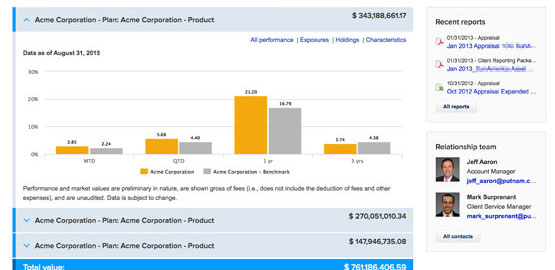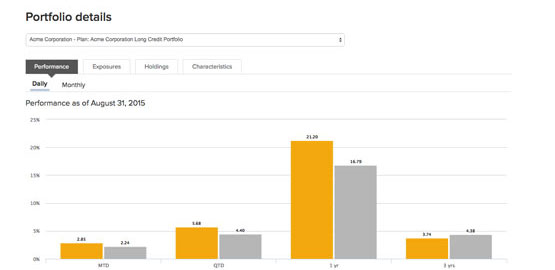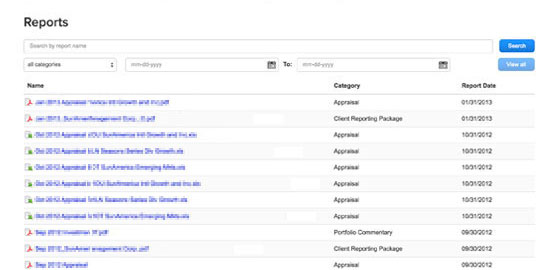Equity Insights offers research and perspectives from Putnam’s equity team on market trends and opportunities.
This month’s authors: Richard E. Bodzy and Gregory D. McCullough, CFA, Portfolio Managers
After several challenging quarters, large-cap growth stocks delivered solid returns in the early months of 2023, and we remain optimistic about their prospects. Growth stock multiples have pulled back substantially over the past 12 to 18 months. At the same time, forward revenue and earnings growth estimates have come down to more reasonable — less “heroic” — levels. Also, large-cap growth stocks may benefit as the Federal Reserve’s monetary tightening eases over the next 12 months.
What’s the key to capturing opportunities in this space? You have to be present to win. We believe great companies can become even better in challenging markets. For stocks we own, we are starting to see upside again in consensus growth estimates. And we continue to see structural tailwinds and exciting multiyear trends that we believe can drive sustained growth for many businesses.
Promising sectors in a less crowded space
Another trend in our favor is the fact that the growth stock universe has become less crowded. Broad-based ownership of growth stocks declined after value began to take over market leadership in 2020. Also, many companies today are no longer chasing every incremental dollar of revenue at any cost. This is especially true in the large-cap technology space. Cost management actions on the part of many businesses may contribute to margin integrity and profitable growth.
More broadly, we are optimistic about the innovation we believe will come from traditional growth sectors in the next 3 to 5 years. These sectors include technology, health care, consumer discretionary, and industrials. Conversely, the energy sector is coming off a massive run-up in 2022, and it has pulled back significantly year to date. Another sector with immense year-to-date challenges is financials, particularly some of the less well-capitalized banks.
AI moves beyond the buzzword phase
In the technology sector, excitement around artificial intelligence has been building for many years. But now we’re seeing strategic action and prominent real-world applications from some of the world’s largest tech companies as it relates to AI. For example, Microsoft added to its ownership stake in OpenAI, which owns the ChatGPT tool, by investing $10 billion more into the startup company. Microsoft has immediate plans to integrate features of ChatGPT’s AI-powered text-generating functionality into its Office 365 product suite. One can imagine how Outlook emails can be crafted more efficiently and inbox mail summarized succinctly. Similarly, Microsoft is integrating generative AI into its Bing search business in an effort to take on Google’s market dominance in search. Both of these initiatives present large potential new streams of revenue for the company.
We are optimistic about the innovation we believe will come from traditional growth sectors in the next 3 to 5 years.
The benefit of a thematic lens
In certain pockets of the growth universe, we see trends that are powerful and multiyear in nature. This is the source of the growth themes in our portfolio. Approximately 90% of our holdings are tied to one or more of our 12 themes. Among them are “The humanization of pets,” “Personalized medicine,” and “The experience economy.” Focusing on themes allows us to identify areas of the growth universe that demonstrate consistent, above-market growth, which we define as high single-digit top-line revenue growth and double-digit free cash flow growth.
It’s not enough to simply identify a business that is associated with a long-term growth theme. We scrutinize businesses in the context of their industries overall, and often we favor the “enablers” of growth themes and trends. Also known as pick-and-shovel businesses, these companies provide products or services that enable the growth of the overall industry.
Theme: 5G connectivity | Stock: American Tower (AMT)
American Tower fits into the enablers category. The transition to 5G technology is an important growth theme that we believe will play out in waves globally over the next 15 years as wireless data applications expand well beyond consumer smartphones. American Tower is well positioned as it rents space on towers and rooftop antennas to wireless carriers and broadcasters. This company is indifferent to which mobile provider will gain the most market share, which might be a challenge to accurately predict. Instead, American Tower may benefit from the $30 billion-plus in infrastructure that’s necessary to transition from 4G LTE to 5G.
Theme: Digital marketing | Stock: CoStar Group (CSGP)
Spending on digital marketing has risen as attention has shifted from traditional media to digital platforms. Companies know the increasing importance of mobile applications, search engines, and websites for driving the growth of their businesses. CoStar is the dominant information provider for the commercial real estate industry, offering data, tools, listings, and online marketplaces. CoStar is used for 80% of all commercial real estate transactions. Its top-line growth has been in the mid to high teens (primarily organic), with projected earnings growth of 20% over the next two years.
Theme: Increased screen time | Stock: Universal Music (UMGNF)
Relative to five years ago, we all know people spend considerably more time consuming content on mobile devices. We can access the content we want from almost anywhere, and device usage is growing rapidly as streaming platforms increasingly cater to consumers outside the home. We believe Universal Music is a significant beneficiary of this trend. The company collects a royalty every time a song is streamed from its massive library of artists. Whether these artists are streamed on Facebook, Apple music, Spotify, TikTok, or elsewhere, Universal Music will be paid. We believe the company will be a low double-digit grower for the next half decade while also being largely insulated from economic fluctuations.
The themes in our portfolio do not change often because they are based on secular trends and our multiyear outlooks. However, we are constantly considering new ones based on changing markets and consumer preferences. For the stocks we own, we don’t try to identify which day, month, or quarter they may outperform. We look for durable growth companies that tend to perform competitively within their industries across a full economic cycle. We also look for companies that offer the powerful combination of an advantaged business model and a capable, properly incentivized management team.
333803
For illustrative purposes only. These are a few examples of current growth themes. Growth themes will change over time. Projected earnings and revenue growth does not necessarily translate into positive returns and may not be realized. Securities prices fluctuate in value unpredictably and there is no guarantee of investment success or positive performance. Growth stocks may be more susceptible to earnings disappointments, and the market may not favor growth-style investing. Investors should carefully consider the risk involved before deciding to invest. As with any investment, there is a potential for profit as well as the possibility of loss.
Stock examples: Mention of individual companies are intended to illustrate growth investment themes and should not be considered a recommendation or solicitation to purchase or sell the securities. Current investment themes and individual companies were selected without regard to whether such themes, or relevant securities, were profitable and are intended to help illustrate the investment process. The securities mentioned are not necessarily held by Putnam for all client portfolios. It should not be assumed that any investment in these securities was, or will prove to be, profitable, or that the investment decisions we make in the future will be profitable or equal to the investment performance of securities referenced herein. A security may be selected for the portfolio based on factors other than the growth themes, metrics, and characteristics highlighted herein, and the analysis is not intended to be relied upon as a forecast or investment advice, and is not a recommendation, offer, or solicitation to buy or sell any securities or to adopt any investment strategy. Portfolio characteristics are for a representative account within the U.S. Large Cap Growth Equity Composite. Each account is managed individually. Accordingly, account characteristics may vary.
This material is prepared for use by institutional investors and investment professionals and is provided for limited purposes. By receiving and reviewing this material, the recipient acknowledges the following: This material is a general communication being provided for informational and educational purposes only. It is not designed to be a recommendation of any specific investment product, strategy, or decision, and is not intended to suggest taking or refraining from any course of action. The material was not prepared, and is not intended, to address the needs, circumstances, and objectives of any specific institution, plan, or individual(s). Putnam is not providing advice in a fiduciary capacity under applicable law in providing this material, which should not be viewed as impartial, because it is provided as part of the general marketing and advertising activities of Putnam, which earns fees when clients select its products and services. The views and strategies described herein may not be suitable for all investors. Prior to making any investment or financial decisions, any recipients of this material should seek individualized advice from their personal financial, legal, tax, and other professional advisors that takes into account all of the particular facts and circumstances of their situation. Generally, the representative account is selected based on the account that has the longest track record or that is most representative of the intended strategy taking into consideration the account with the least investment restrictions, the size of the account, and/or most relevant and applicable to the prospective client. Representative accounts may change over time. Unless otherwise noted, Putnam is the source of all data. Putnam Investments cannot guarantee the accuracy or completeness of any statements or data contained in the material. Predictions, opinions, and other information contained in this material are subject to change. Any forward-looking statements speak only as of the date they are made, and Putnam assumes no duty to update them. Forward-looking statements are subject to numerous assumptions, risks, and uncertainties. Actual results could differ materially from those anticipated. While Putnam Investments seeks to achieve the portfolio's stated objective, there is no guarantee the objective will be achieved. All investments involve risk, and investment recommendations will not always be profitable. Putnam Investments does not guarantee any minimum level of investment performance or the success of any investment strategy. Investing entails risks, including possible loss of principal. Past performance is no guarantee of future results.
This material or any portion hereof may not be reprinted, sold, or redistributed in whole or in part without the express written consent of Putnam Investments. The information provided relates to Putnam Investments and its affiliates, which include The Putnam Advisory Company, LLC and Putnam Investments Limited®.











